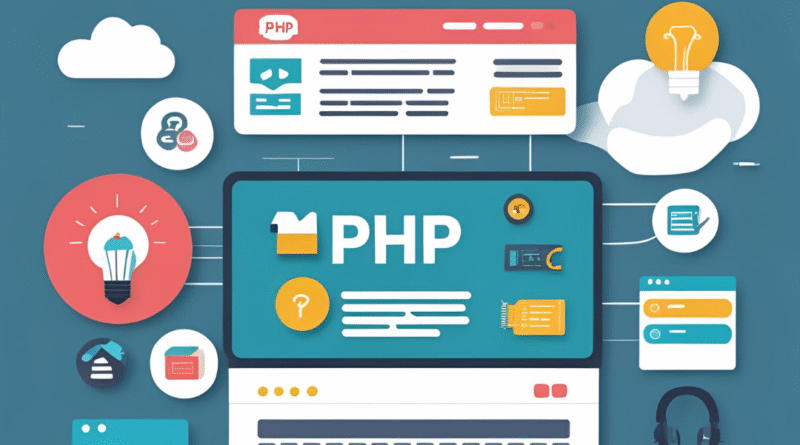Introduction to PHP :- History and versions of PHP
Unpacking PHP: A Journey from Personal Pages to Powering the Web
Ever wondered what makes so many websites tick, allowing them to be dynamic and interactive instead of just static pictures and text? Chances are, PHP plays a huge role! This blog post will introduce you to PHP, one of the most widely used programming languages for web development, and take you on a quick tour through its fascinating history and various versions.
What is PHP, Simply Put?
At its core, PHP (which originally stood for “Personal Home Page” but now officially means “PHP: Hypertext Preprocessor”) is a server-side scripting language. This means that when you visit a website powered by PHP, the code isn’t run in your web browser. Instead, it runs on the web server, generates regular HTML (and sometimes other things like images or data), and then sends that final output to your browser.
Think of it like this: your web browser is like a customer ordering a meal at a restaurant. HTML and CSS are like the menu and the decor. PHP is like the chef in the kitchen, taking your order, preparing the ingredients (maybe pulling some from a database), cooking everything up, and finally serving you the finished dish (the HTML page). You only see the delicious meal, not the cooking process!
PHP is especially well-suited for web development because it can easily be embedded directly within HTML code, making it super flexible for creating dynamic content, handling forms, and interacting with databases.
A Brief History of PHP: From Humble Beginnings to Web Giant
PHP’s journey is a classic example of a project growing organically into something massive. It all started with Rasmus Lerdorf in 1994.
- PHP/FI (Personal Home Page/Forms Interpreter – circa 1995): Rasmus initially created a simple set of tools in C to manage his personal homepage and track visitors to his online resume. He called it “Personal Home Page Tools.” As he added more features, like handling web forms and database integration, it evolved into PHP/FI. This early version was more of a collection of utilities than a full-fledged language.
- PHP 3 (1998): This was a major turning point. Two Israeli developers, Zeev Suraski and Andi Gutmans, rewrote the core of PHP from scratch. This new, more robust foundation brought in features like object-oriented programming (OOP) support and a much more organized structure. It’s largely considered the first version that resembles the PHP we know today. This is also when “PHP: Hypertext Preprocessor” became the official recursive acronym.
- PHP 4 (2000): Built on the “Zend Engine” (named after Zeev and Andi), PHP 4 focused heavily on performance improvements and scalability, making it suitable for larger, more complex applications. It also introduced important features like HTTP sessions. This era saw PHP’s adoption explode, especially with the rise of popular platforms like WordPress (which was initially powered by PHP 4).
- PHP 5 (2004): This version brought significant advancements, especially in its object-oriented capabilities with the Zend Engine 2.0. It introduced better error handling, improved database support (with PDO – PHP Data Objects), and a host of other features that made PHP more powerful and reliable for enterprise-level applications.
- PHP 6 (Never Released): You might notice a jump! PHP 6 was planned to include native Unicode support, but development faced significant challenges and performance issues, leading to its eventual abandonment. Many of its intended features were later incorporated into subsequent PHP 5.x releases.
- PHP 7 (2015): After skipping PHP 6 to avoid confusion, PHP 7 was a game-changer. It delivered a massive performance boost (often twice as fast as PHP 5.6!) thanks to the new Zend Engine 3.0. It also introduced new language features like scalar type declarations and return type declarations, pushing PHP towards more modern programming practices.
- PHP 8 (2020 onwards): The latest major iteration, PHP 8, continues to refine the language. It introduced features like the Just-In-Time (JIT) compiler for even better performance in certain scenarios, union types, named arguments, and match expressions, further modernizing PHP and making it more powerful and enjoyable to work with. Newer minor versions like PHP 8.1, 8.2, 8.3, and the latest PHP 8.4 (as of late 2024) continue to bring performance improvements, new features, and ongoing security updates.
Why Does This History Matter?
Understanding PHP’s evolution helps you appreciate its strengths and why it remains so relevant today. From its humble beginnings as a tool for a personal website, PHP has constantly adapted and improved, demonstrating its flexibility and the dedication of its vibrant open-source community.
Staying updated with the latest PHP versions is crucial for developers. Newer versions offer significant performance improvements, enhanced security features, and exciting new syntax that can make your code cleaner and more efficient. So, whether you’re building a simple blog or a complex e-commerce platform, PHP continues to be a powerful and reliable choice for web development.




